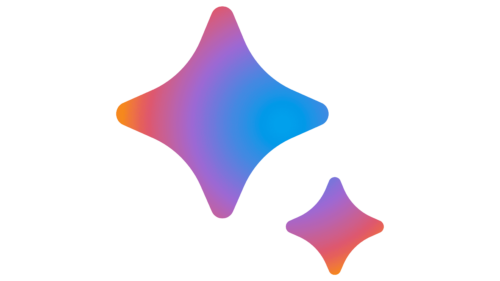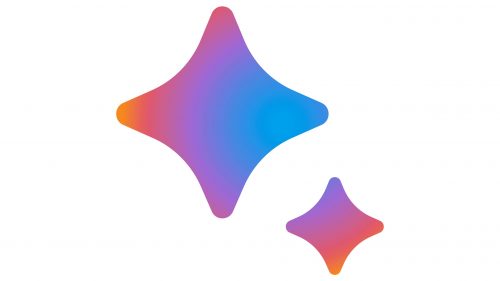The Google Bard logo can be compared to a guiding star in the digital world. It symbolizes artificial intelligence’s perfection and highlights this model’s creative potential. The emblem reflects continuous growth and development, promising new opportunities for humanity that the technology will bring.
Google Bard AI: Brand overview
Although Google Bard’s new history is strongly related to the company’s extensive research in artificial intelligence and natural language processing.
The enterprise’s Transformer architecture, which was unveiled in 2017, transformed natural language processing. This technique was built on several contemporary language models, including the one eventually employed in this conversational AI.
The firm unveiled a natural language processing paradigm called BERT (Bidirectional Encoder Representations from Transformers) in 2018. It is built on the Transformer architecture. BERT’s notable improvement in language context and nuance understanding is an essential first step in building more complex language models.
In 2020, the company introduced T5 (Text-to-Text Transfer Transformer), a universal language model that can handle various text-processing jobs. T5 denoted another crucial phase in the evolution of the technology later employed in conversational AI.
The corporation unveiled LaMDA (Language Model for Dialogue Applications) in January 2021, a language model created especially for dialogues. After training on a huge corpus of texts, LaMDA produced more organic and suitable discussion responses. This model directly preceded conversational AI.
The firm formally unveiled its latest LaMDA-based conversational AI on February 6, 2023. This service was first presented as an experimental conversational AI that could produce different kinds of material, explain difficult subjects, and respond to queries.
The company made the service available for testing to testers in the US and the UK on March 14, 2023. Just a small number of them were made available via invitation. The enterprise said that enterprise said the AI was still in its infancy and that it would continue to evolve in response to customer input.
The firm extended availability to more than 180 countries and territories in May 2023. However, the service was still exclusively offered in English.
The company revealed a big improvement to the service in July 2023. A new version with improved planning, comprehension, and reasoning capabilities was released. It was built on the PaLM 2 concept. The AI was also supported in more than 40 languages.
In September 2023, the enterprise started integrating the service with applications like Gmail, Docs, and Drive. This allowed the AI to use users’ data to provide more customized responses.
The firm unveiled Gemini, a novel multimodal AI model, in December 2023 to use as the basis for upcoming iterations. Gemini could now comprehend and produce content in various formats, including text, graphics, and audio.
The company revealed in early 2024 that the service would now include a more sophisticated Gemini model. This version, known as Gemini Pro, significantly improved the AI’s performance and abilities in various activities, including more intricate thinking and analysis.
Additionally, the firm improved context understanding and translation accuracy in languages that the service previously supported while introducing several additional languages.
The business started incorporating the service more extensively with other products—such as the Google Search engine. This enabled visitors to get more thorough and contextual responses to their questions from the search results page.
The company revealed plans to improve image processing and analysis skills. This will greatly increase the AI’s applicability in various contexts by allowing it to comprehend and analyze textual and visual content.
The firm continued to work to enhance the service’s moral aspects, implementing more sophisticated safeguards against creating inaccurate or damaging content.
Additionally, the enterprise started experimenting with AI for educational purposes, creating customized assistant versions to help teachers and pupils.
The company released a version specifically designed for businesses, offering enhanced security and privacy for managing company information.
The firm is still making significant investments in artificial intelligence research and development, which could lead to future service developments and the creation of new capabilities.
The business stressed the significance of taking a responsible approach to AI development throughout the conversational AI’s development. The enterprise has implemented several safeguards, such as user feedback systems and content filters, to guarantee AI’s security and ethical use.
The firm is still actively working on the service, expanding its applicability and improving its capabilities. AI is a key component of the enterprise’s artificial intelligence strategy, and more integration of this technology into its goods and services is planned.
Meaning and History
What is Google Bard?
Google has developed an artificial intelligence chatbot. It is a vast language model trained to communicate with humans, answer questions, and help with various tasks. It can produce and understand human speech, explain complex issues, help with creative writing, and provide knowledge on various topics. It can be used as a digital assistant to find information, solve problems, and create content. The brand competes with existing artificial intelligence chatbots, aiming to provide customers with an intelligent and easy-to-use interlocutor. The company is constantly updating the system to improve its functionality and accuracy.
2023 – 2024
The emblem of Google’s new development, represented by two four-pointed stars of different sizes, symbolizes the company’s pursuit of innovation and the steady growth of technology. The two stars, one larger than the other, reflect gradual development and the increasing influence of artificial intelligence (AI) in the market. This visual embodiment represents the process of algorithm learning and striving for perfection.
This logo’s gradient was purposefully chosen, transitioning from blue and purple to orange. It carries multiple symbolic meanings:
- Creative capabilities of the machine: Bard, a Google developer, can create poems and stories, highlighting AI’s creative potential.
- High intelligence and self-organization: The system efficiently processes large volumes of data, summarizes information, and provides interpretations, demonstrating its intellectual power.
- Logic and rationality: The gradient also symbolizes the logical foundation of machine intelligence on which Bard is built.
- Friendliness and human-oriented support: Bard is designed to offer assistance and be a helpful tool for people.
On the right ray of the larger star, an invisible stream of digital information seems to be flowing, coloring it blue, symbolizing forward movement into the future. This element underscores the innovative and progressive nature of the development.
The creation story of this logo and its elements reflects current trends and Google’s ambitions in artificial intelligence. Google aims to develop technologies that can integrate into everyday life and benefit users worldwide.





